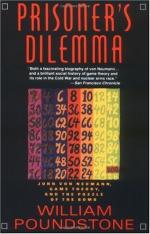|
This section contains 355 words (approx. 1 page at 400 words per page) |

|
Chapter 8 Game Theory and its Discontents Summary and Analysis
Midway through the 1950s, the initial interest in game theory had began to wane. Many saw the assumptions of game theory as unrealistic and callous. The games modeled perfectly rational, but seemingly inhuman, amoral players. Also, the public mind had begun to associate game theory with the RAND corporation and John von Neumann, who they saw as Machiavellian amoralists advocating nuclear war. Researchers interested in game theory began to shift away from pure mathematics into an experimental approach of how actual humans behaved in game situations.
The most exciting of these studies in the Ohio State studies in the 1950s and 1960s. Ohio State students were put in prisoner's dilemma situations. One subject was placed in a room with a two buttons and was asked to push one of the buttons...
(read more from the Chapter 8 Game Theory and its Discontents Summary)
|
This section contains 355 words (approx. 1 page at 400 words per page) |

|




